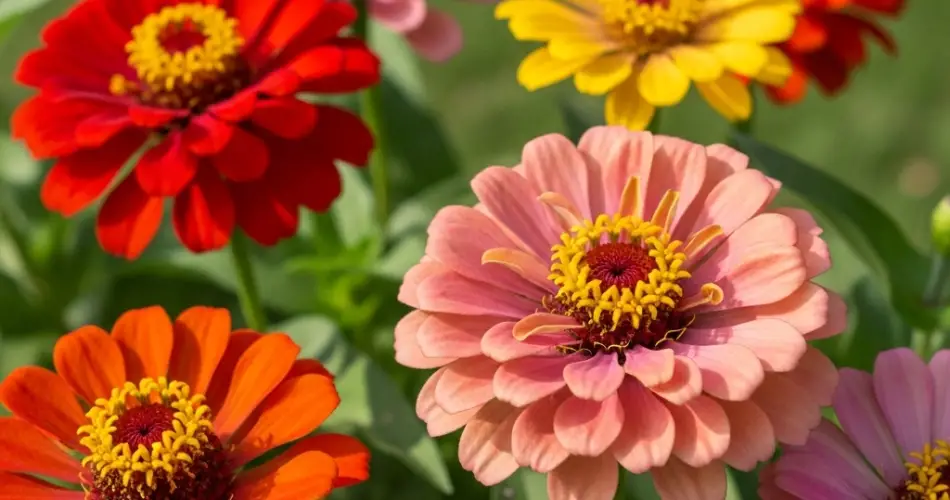Zinnias are a favorite among gardeners for their bold colors, long blooming season, and ability to attract pollinators like bees and butterflies. These cheerful annuals come in a range of shapes, sizes, and hues, making them perfect for flower beds, borders, and cut flower gardens. While zinnias are easy to grow, giving them the right soil and sunlight conditions can make all the difference between average growth and a truly vibrant display.
If you’re aiming for lush, continuous blooms throughout the growing season, understanding zinnias’ soil and sunlight needs is the first step toward success.
Why Soil and Sunlight Matter for Zinnias
Like most annual flowering plants, zinnias thrive when given the right foundation. They grow quickly, bloom abundantly, and last long into the summer and early fall—provided they have healthy soil and plenty of sunshine. Poor conditions, on the other hand, can lead to weak stems, fewer blooms, and increased susceptibility to disease.
Ideal Soil for Zinnias
1. Well-Draining Soil
Zinnias dislike soggy roots. Planting them in soil that holds too much water will lead to root rot and fungal issues such as powdery mildew. Well-draining soil allows excess water to pass through while retaining enough moisture for healthy growth.
Tips:
-
If your soil tends to stay wet, amend it with coarse sand, perlite, or fine gravel to improve drainage.
-
Avoid planting zinnias in low-lying areas where water collects after rainfall.
2. Moderately Fertile
Zinnias are not heavy feeders, so overly rich soil isn’t necessary. In fact, too much nitrogen can encourage leafy growth at the expense of blooms. A moderately fertile soil is perfect—it supports strong plants without sacrificing flower production.
Best practice:
-
Before planting, mix compost or aged manure into the top 6–8 inches of soil to improve texture and provide a gentle nutrient boost.
-
Avoid synthetic fertilizers high in nitrogen. Opt for balanced fertilizers with equal parts nitrogen, phosphorus, and potassium (e.g., 10-10-10) if needed.
3. Slightly Acidic to Neutral pH
Zinnias prefer a soil pH between 5.5 and 7.5. This range ensures that nutrients are readily available for absorption by the roots.
How to check:
-
Use a simple home soil test kit to determine your garden’s pH.
-
If your soil is too acidic, adding garden lime can help raise the pH.
-
For alkaline soil, incorporating organic matter like compost or peat moss can help balance it.
Sunlight Requirements for Zinnias
1. Full Sun is a Must
Zinnias are sun-lovers. To bloom their best, they need at least 6 to 8 hours of direct sunlight each day. Without enough light, zinnias become leggy, produce fewer flowers, and are more prone to disease.
Ideal locations:
-
Open garden beds that receive full sun from morning through late afternoon.
-
Containers placed in bright areas like patios, balconies, or rooftop gardens.
2. Why Sunlight Boosts Blooming
Sunlight fuels photosynthesis, helping plants produce the energy needed for vibrant blooms and sturdy stems. Full sun also keeps foliage dry, which reduces the risk of fungal infections like mildew—a common problem in humid or shaded environments.
Helpful tip:
If your region has extremely hot summers, zinnias may benefit from light afternoon shade to prevent wilting, but too much shade overall will hinder flowering.
Preparing the Planting Site
Before planting zinnias, take the time to prepare the site properly:
-
Clear the area of weeds and debris to prevent competition for nutrients and light.
-
Loosen the soil to a depth of 6–8 inches to encourage good root development.
-
Incorporate organic matter like compost to improve soil structure and fertility.
Once the soil is ready, sow zinnia seeds directly after the last frost, spacing them 6 to 12 inches apart depending on the variety. Thin seedlings once they’re a few inches tall to improve airflow and reduce the risk of disease.
Container Growing Tips
Zinnias also do well in containers, provided you give them the right conditions:
-
Choose pots with drainage holes.
-
Use a quality potting mix with perlite or sand for extra drainage.
-
Place the container in a sunny location.
-
Water when the top inch of soil feels dry, but don’t let the pot sit in water.
Final Thoughts
Zinnias reward the gardener who meets their basic needs with a spectacular show of color that lasts all season long. By providing well-draining, moderately fertile soil and full sun exposure, you create the perfect conditions for vigorous growth and abundant blooms. With these foundational elements in place, your zinnias will thrive—bringing beauty to your garden, joy to pollinators, and vibrant bouquets to your table.



